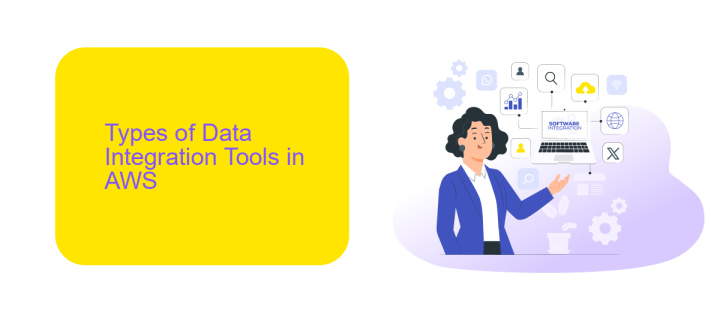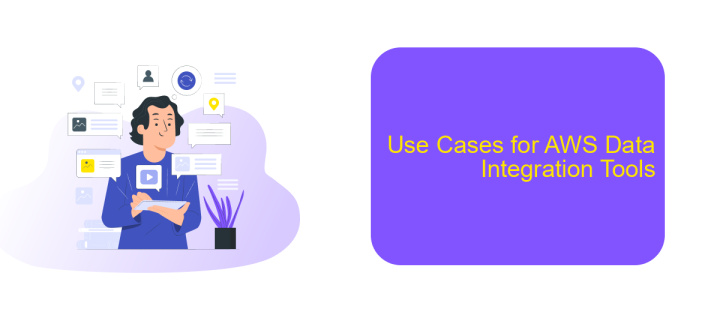Data Integration Tools AWS
Data integration tools are essential for managing and consolidating data from diverse sources, enabling seamless data flow and analytics. AWS offers a robust suite of data integration services designed to simplify and enhance this process. This article explores the various AWS data integration tools, their features, and how they can help organizations achieve efficient and scalable data management.
Introduction to Data Integration Tools in AWS
Data integration tools in AWS are essential for organizations looking to streamline their data management processes and ensure seamless data flow across various applications and services. These tools help in combining data from different sources, transforming it into a consistent format, and loading it into a target system for analysis and reporting.
- Amazon Glue: A fully managed ETL (extract, transform, load) service that makes it easy to prepare and load data for analytics.
- Amazon Redshift: A fast, scalable data warehouse that simplifies data analysis and integration.
- Amazon Kinesis: A platform for real-time data streaming and analytics.
- ApiX-Drive: A versatile tool for connecting various applications and automating data workflows without coding.
These tools, along with others available in the AWS ecosystem, provide robust solutions for data integration, enabling businesses to harness the power of their data efficiently. By leveraging services like ApiX-Drive, organizations can automate data transfers, reduce manual intervention, and ensure data consistency across their platforms, ultimately driving better decision-making and business outcomes.
Types of Data Integration Tools in AWS

AWS offers a variety of data integration tools designed to streamline and simplify the process of combining data from different sources. One of the primary tools is AWS Glue, a fully managed ETL (extract, transform, load) service that automates the process of data preparation. It allows users to categorize, clean, and enrich data, making it easier to move data between different data stores. Another notable tool is Amazon Redshift, a data warehousing service that supports complex queries and analytics, enabling seamless data integration from various sources.
Additionally, AWS Data Pipeline is a web service that helps you process and move data between different AWS compute and storage services. For those looking to integrate third-party services, ApiX-Drive is a useful tool that can connect AWS with various external applications, automating workflows and data synchronization. This service can be particularly beneficial for businesses needing to integrate AWS with CRM systems, marketing platforms, and other cloud services, ensuring a cohesive data ecosystem.
Features and Benefits of AWS Data Integration Tools

AWS Data Integration Tools offer a comprehensive suite of features designed to streamline and enhance data workflows across various environments. These tools are engineered to manage, transform, and synchronize data efficiently, providing robust support for diverse integration scenarios.
1. **Scalability**: AWS tools can handle vast amounts of data, ensuring that your integration processes can scale seamlessly as your data grows.
2. **Security**: With built-in security features, AWS ensures that your data is protected throughout the integration process.
3. **Flexibility**: AWS supports multiple data sources and formats, offering a flexible solution for complex integration needs.
4. **Real-time Processing**: AWS tools enable real-time data processing, allowing for timely insights and actions.
5. **Cost Efficiency**: Pay-as-you-go pricing models help manage costs effectively, ensuring you only pay for what you use.
Moreover, integrating AWS Data Integration Tools with third-party services like ApiX-Drive can further enhance your data workflows. ApiX-Drive simplifies the setup of integrations, automating data synchronization between AWS and other platforms, thus saving time and reducing manual errors. Utilizing these tools together can significantly improve operational efficiency and data accuracy.
Use Cases for AWS Data Integration Tools

AWS Data Integration Tools are essential for businesses looking to streamline their data workflows and ensure seamless data transfer between various systems. These tools offer robust solutions for collecting, processing, and analyzing data from multiple sources, making them indispensable for data-driven decision-making.
One of the primary use cases for these tools is in the realm of data synchronization. Companies often need to keep their data consistent across different platforms, and AWS Data Integration Tools make this process efficient and reliable. Additionally, these tools can significantly enhance data migration projects by simplifying the transfer of large datasets from on-premises systems to the cloud.
- Real-time data analytics
- Data warehousing
- ETL (Extract, Transform, Load) processes
- Data synchronization across multiple systems
- Data migration to cloud environments
For businesses requiring more customized data integration solutions, services like ApiX-Drive can be invaluable. ApiX-Drive allows for easy setup and management of integrations between various applications and platforms, further enhancing the capabilities of AWS Data Integration Tools. By leveraging such services, organizations can achieve greater efficiency and flexibility in their data operations.


Best Practices for Implementing AWS Data Integration Tools
Implementing AWS data integration tools requires careful planning and adherence to best practices to ensure seamless data flow and efficient operations. Begin by thoroughly assessing your data sources, formats, and destinations to determine the most suitable AWS services, such as AWS Glue, AWS Data Pipeline, and Amazon Kinesis. Prioritize security by implementing robust encryption methods and access controls, and ensure compliance with relevant data protection regulations. Utilize monitoring and logging tools like Amazon CloudWatch to track data integration processes and swiftly address any issues that arise.
For an enhanced integration experience, consider leveraging third-party solutions like ApiX-Drive, which simplifies the process of connecting various applications and automating data workflows. ApiX-Drive can help bridge the gap between AWS services and other platforms, ensuring a more cohesive data ecosystem. Additionally, regularly review and optimize your data integration processes to maintain performance and scalability. By following these best practices, you can effectively harness the power of AWS data integration tools to drive business insights and operational efficiency.
FAQ
What is Data Integration in AWS?
How can I automate data integration tasks in AWS?
What are some common challenges in data integration?
How do I ensure data security during integration?
Can I integrate data from non-AWS sources into AWS?
Time is the most valuable resource for business today. Almost half of it is wasted on routine tasks. Your employees are constantly forced to perform monotonous tasks that are difficult to classify as important and specialized. You can leave everything as it is by hiring additional employees, or you can automate most of the business processes using the ApiX-Drive online connector to get rid of unnecessary time and money expenses once and for all. The choice is yours!

